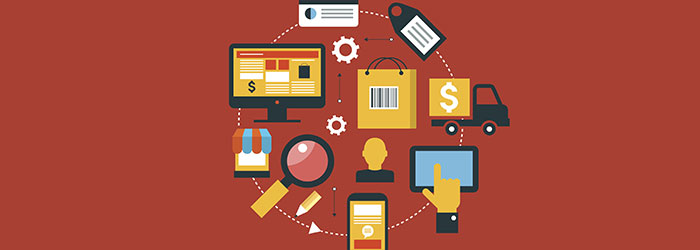The Multi-Channel Contact Center Expands the Storefront
In the current landscape, retailers must be able to interact with customers in a variety of ways: phone, instant messaging, email, social media, video and the web. This demands not just a call center, manned by personnel with telephones to answer customer questions, but rather a full-service customer engagement center that delivers meaningful communications with customers via the channel with which they’re most confortable.
An effective engagement center serves as an extension of the retail storefront, quickly connecting customers with knowledgeable representatives whom can deliver an immediate and personal response via the customer’s chosen medium.
The Importance of Communication Technology
“Technology is a two-edged sword that can frustrate customers as easily as it can make their experience better,” observes Kurt Van Dyn Hoven, director of retail industry solutions at eGain, a customer engagement solutions provider. “But retailers who get communications technology right can increase sales and long-term customer loyalty while actually reducing contact center costs.”
Van Dyn Hoven cites several capabilities that are critical to frictionless customer engagement. One is the ability to maintain seamless conversations with customers as they move from channel to channel. This is easier said than done — but is possible with the right architecture.
Another is self-service, “Customers often prefer to find the answers they want, when they want them, instead of having to wait for a service representative to help them,” Van Dyn Hoven says. “Self-service also drives down operating expenses and frees reps to focus on situations that really require their personal attention.”
A third is intelligent anticipation of customers’ needs. Some retailers, for example, have found that customers like getting one notification when their order has shipped, a subsequent update about their order’s progress in transit and finally a confirmation of its arrival.
“If you can give customers that kind of communication without them having to ask for it, you can build a strong emotional connection to your brand,” says Van Dyn Hoven. “That connection translates into larger orders, higher per-customer revenue and less vulnerability to the competition.”
The percentage of IT decision-makers who consider customer service among the software investments they’re focusing on the most
SOURCE: Forrester Research
The Opportunistic Retailer
Ken Morris, principal at Boston Retail Partners, agrees that anticipating customer needs is important. But he goes a step further and suggests that retailers can be even more opportunistic by applying other types of logic to customer engagement — and then using a well-engineered engagement hub to reach out to customers in whichever way makes the most sense.
“Retailers can respond to real-time events in ways that drive sales by offering customers what they need, when they need it,” he says. For example, he adds, some vendors offer free or discounted delivery to customers on days when the weather is bad. Others may promote generators — along with fast delivery and installation support — to customers who have lost their power.
“Promotions are much more effective when they are tied to issues that the customer is facing at the moment,” Morris explains. “And with the mobile channel, those moments are available to retailers as never before.”
According to Morris, the social channel also presents retailers with new ways of meeting the needs — and potentially exceeding the expectations — of customers. He recounts the case of a furniture retailer who reviewed a customer’s Pinterest page to get a better sense of her preferences. “The retailer was able to propose pieces that perfectly matched the customer’s taste,” he says. “So in addition to making a nice sale, the retailer was also able to elevate the customer’s perception of brand value.”
Morris envisions a future in which retailers will be able to aggregate the individual pieces of data they gather from these various touchpoints during extended conversations with the customer to dramatically transform the way they market and merchandise.
Solving the Customer’s Problem
CDW Unified Communications and Collaboration Practice Lead Ken Snyder points out that social media must be be well-integrated with other channels. “As an asynchronous communications channel, social complements synchronous channels like voice and chat,” he explains. “So you want to be able to move between them as appropriate, while preserving the information you’ve already captured so customers don’t have to repeat themselves.”
Snyder says that’s why CDW is incorporating solutions such as eGain, Jive and CafeX into its retail contact center solutions. “If someone is browsing your website and encounters a problem, it’s great to be able to chat with them and start a co-browsing session so you can resolve that problem right then and there,” he says. “It’s also useful to provide customers with social spaces where they can solve each other’s problems — and where, if you need to intervene, you can quickly capture relevant information and provide the necessary expertise in real time.”
Snyder also points out that great customer engagement requires more than seamless communications with the customer. It also demands seamless collaboration among a retailer’s own internal subject-matter experts. “When you discover a complex problem, it’s great to be able to immediately pull together the right people so they can ‘swarm’ onto the issue, resolve it and then just as quickly get back to whatever they were doing before.”
Emmanuil Stergakis, senior manager of technical services at high-end clothing retailer Brooks Brothers, also endorses a single view of the customer and great omni-channel communications. But he recognizes that investing in people is as important as investing in technology.
“Our contact center staff undergoes rigorous training in our company’s history, values and products,” he says. Brooks Brothers has also elected to co-locate its contact center with its Enfield, Conn., fulfillment center, so its staff can have the actual merchandise in their hands when they talk to customers. “The hands-on access that our contact center staff has to our products — especially new ones — makes a big difference in the quality of conversation we have with our customers.”

Ellagrin/ThinkStock









